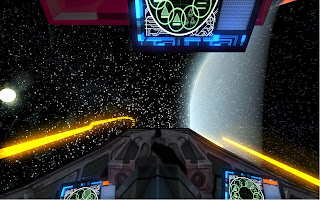Pulse Lasers

Finally I have implemented the Pulse Laser onboard system. This was an exciting build, as it leverages a number of features I've been wanting to play with. Ship System Each Pulse Laser attached to the ship is a ship system, and has a power capacitor which draws energy from the main power unit. When you fire, it fires continuously until the capacitor runs out of juice. After that, the rate of fire for the lasers is limited to the capacitor's recharge rate. What this means is if you let the lasers fully charge, you get an initial ultra-burst of pulse laser fire, followed by a slower volley that can be sustained indefinitely. Rendering It's important to batch objects. A GPU can draw 1000s of lasers in the blink of an eye, as long as you submit it with 1 or 2 draw calls. If you draw each laser individually, you'd easily use up your 33 msec or more. In Pegwars, a python pulse laser fire event writes a pulse laser into a single dyanmic vertex buffer.




